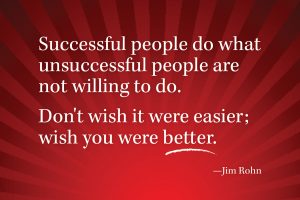The Gala Gambit: How Much Did Your Donor Event Really Cost? It’s no secret that some fundraisers rely on elaborate gimmicks and donor events to separate money from donors’ wallets. In a Disney movie, Daddy Warbucks would come to the rescue, expecting nothing in return for his donation but a feeling of peace and goodwill at the end of the day. Reality is very different, though, because most donors want something more than a clear conscience in return for their investment. It’s human nature. Show Me the Money But all too often, fundraisers spend scads of time, money and effort creating flashy, elaborate events that rival a Great Gatsby party to reward donors who, in return, make small or medium-sized gifts of $1,000, $5,000 or $10,000. I can hear the whir of your mental cogs as you do the calculations now: “But Viken, if we get 10 people who give us $10,000 at our next party, that’s $100,000!” Congratulations on your math skills. That figure sounds great, and I’m happy you’ve got your mind on the money. But did you really consider the true cost of your fundraising event? I’m not just talking dollars and cents here — I’m talking about dollars that make sense. Lord of the Blings Let’s consider a donor event I was just invited to attend in a famous casino town: It includes a 5-star, 5-course dinner and wine pairing event at a posh restaurant; a two-night stay in luxury suites; live, top-notch entertainment, plus a second dinner and cocktail hour — this thing practically rivals the Met Gala. The only thing missing was a swag bag with a Swarovski crystal-studded iPhone and the keys to a Ferrari. Looks great on paper, and it’s sure to attract donors. But think about the real cost of that fundraising event. Yes, I know you’ll say “But most of the amenities were donated, Viken. It didn’t cost us a thing to book Jay-Z!” The Real Math Let’s break down the donor event expenses, shall we? Travel (mileage and time spent in planes, trains and automobiles adds up). Time spent planning the events (because time is money, and these things take time to organize). Lawyer fees for drafting the fine print (the care and feeding of a lawyer is pricey, even if you keep them in a closet on-site). Rolaids (For when the entertainment falls through the week of the gala). Tylenol (For the inevitable headaches caused by reading the fine print, finding backup entertainment, and getting sponsors to return calls). Plastic surgery (to create a permanent grin, because by the time the event rolls around you’ll be too tired to remember to smile at donors). Carpal Tunnel surgery (from shaking hands with everyone in the room). In All Seriousness Fundraising events are a necessity. But all too often, fundraisers forget the easiest, most obvious solution: A planned giving effort (not even a program!) that could have raised hundreds of thousands of dollars had it been implemented 5 to 10 years ago. And it costs next to nothing when compared with the alternatives. Don’t Wait Another Ten Years Implement a planned giving program (or, just an effort) now (a marketing plan helps). You’ll be thanking yourself today, and again in a few years when you don’t have to scramble to find a replacement for Cher because she needed emergency hip surgery the day of your fundraising event. As an Aside … Some of you might be thinking (very few, I hope!) “Heck, I wasn’t here 10 years ago, and I probably won’t be here when those planned gifts come in 5, 10 or 20 years from now. I want to focus on immediate results.” Well, that’s the kind of mentality that creates a constant need for immediate capital. If that’s how you think, it’s time to change your mindset, because it’s not doing your organization any favors. Categories: Annual Gifts, Giving, Major Gifts, Planned Giving Marketing, Marketing Planned Giving, Relationships









